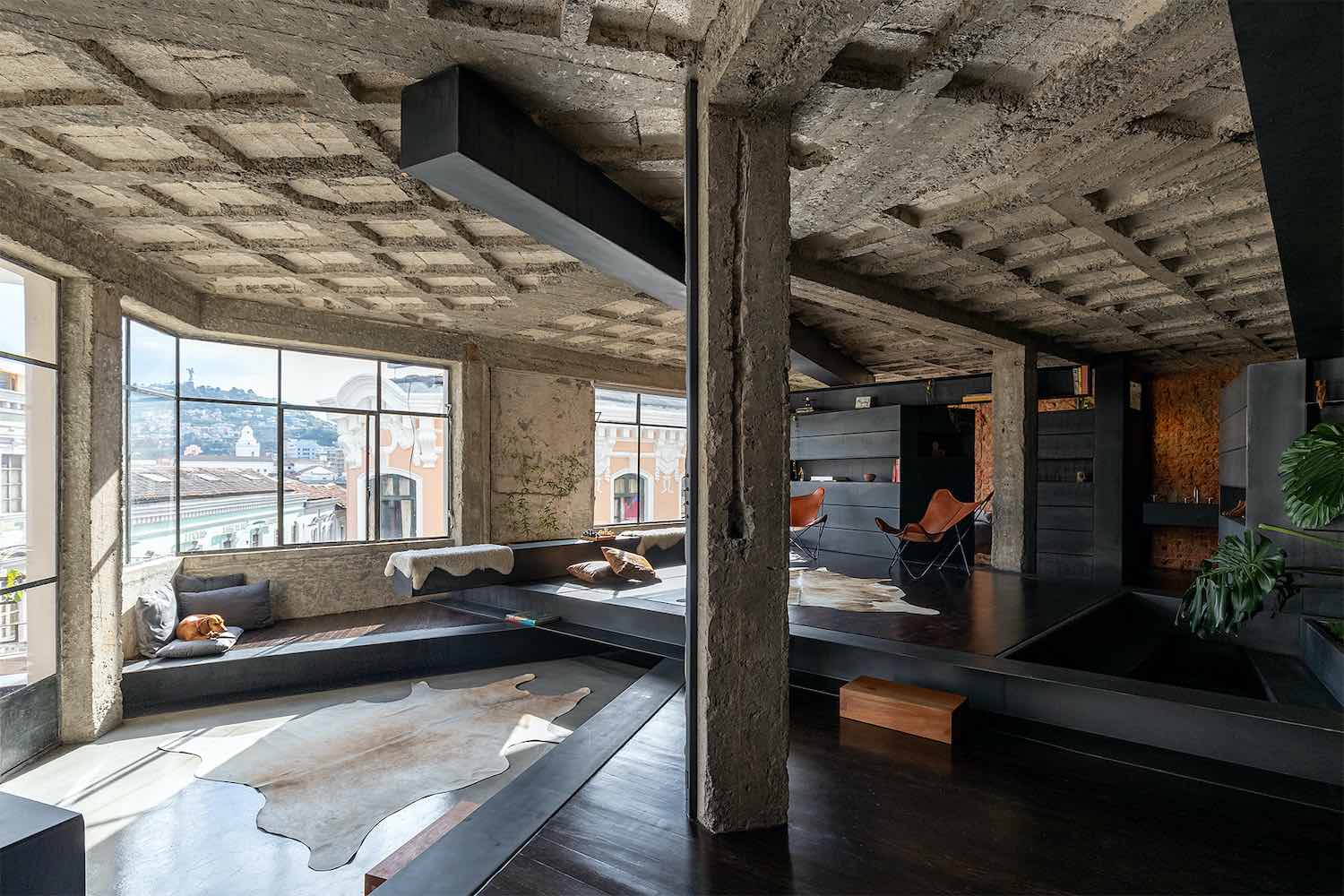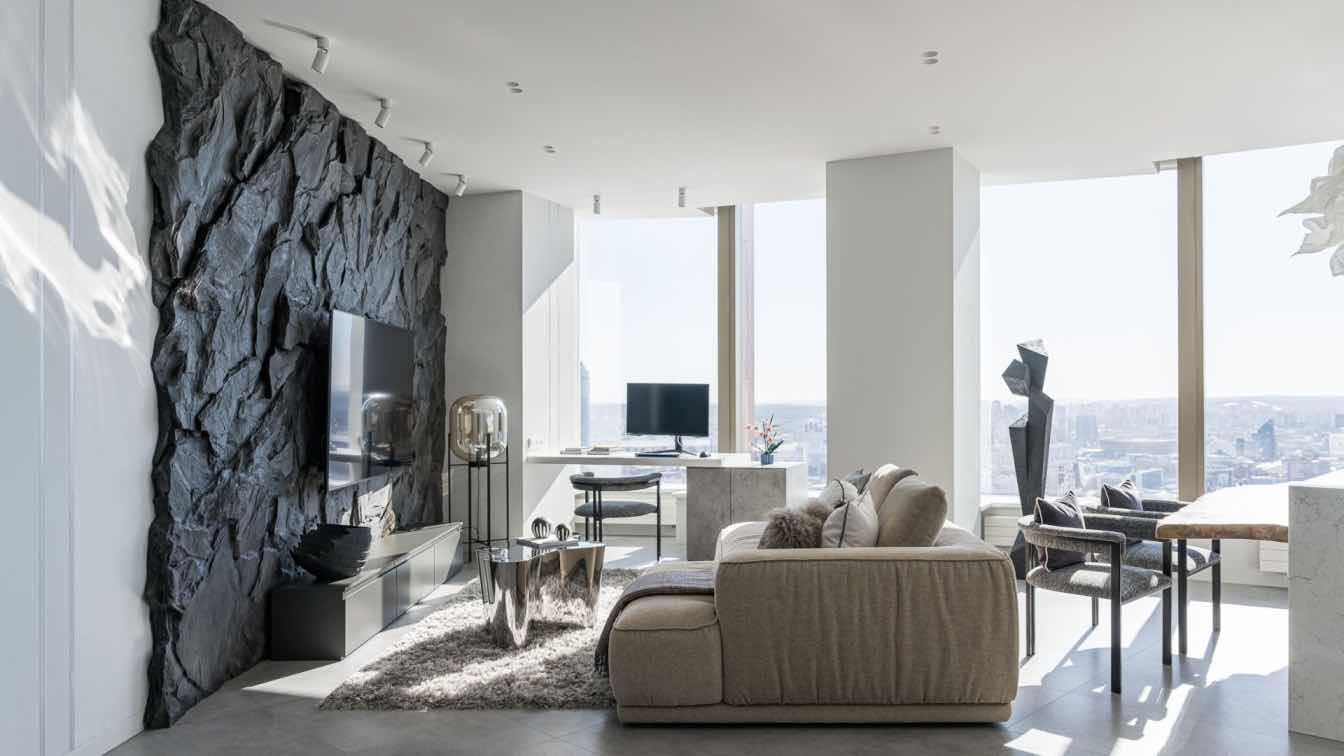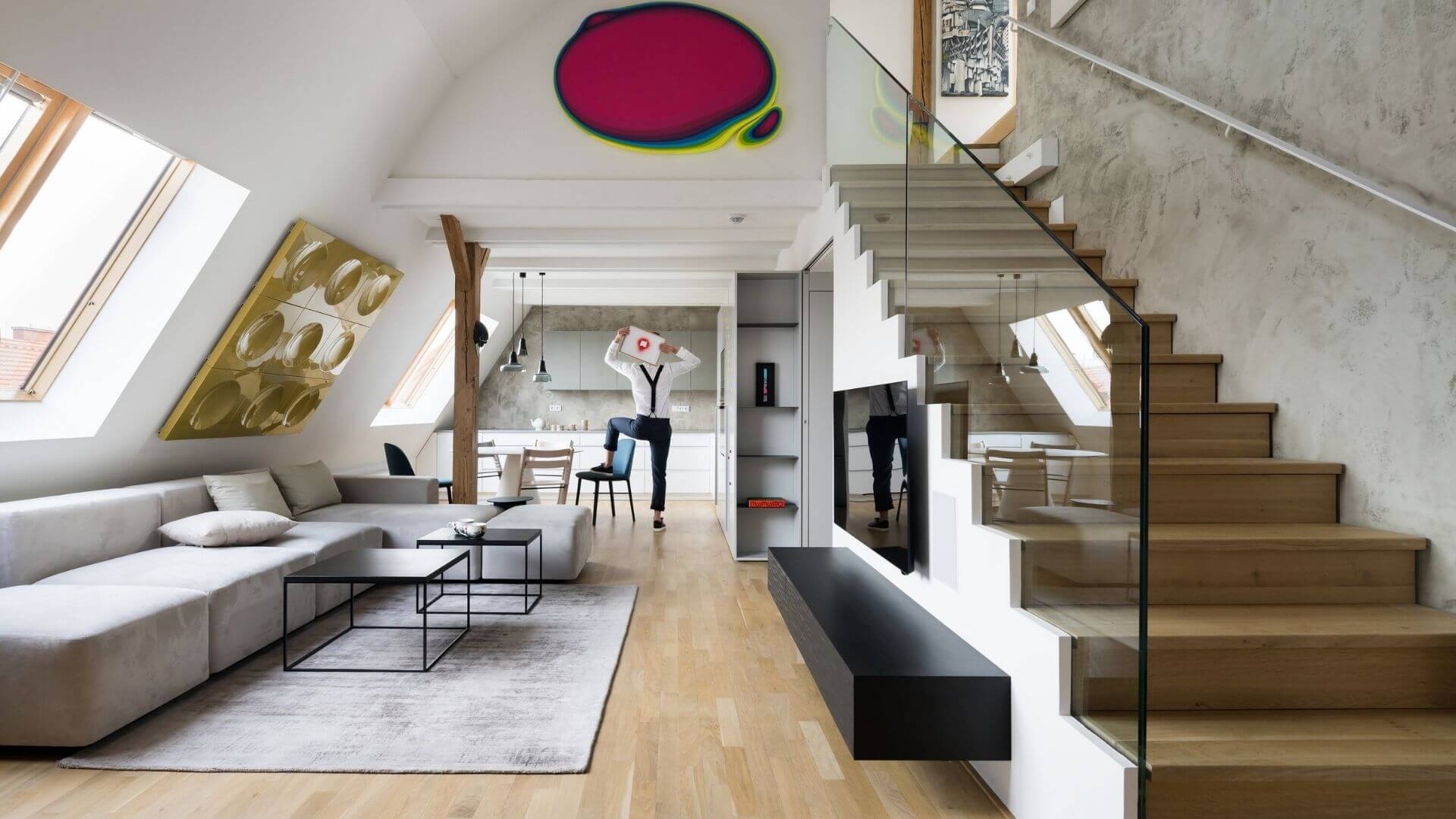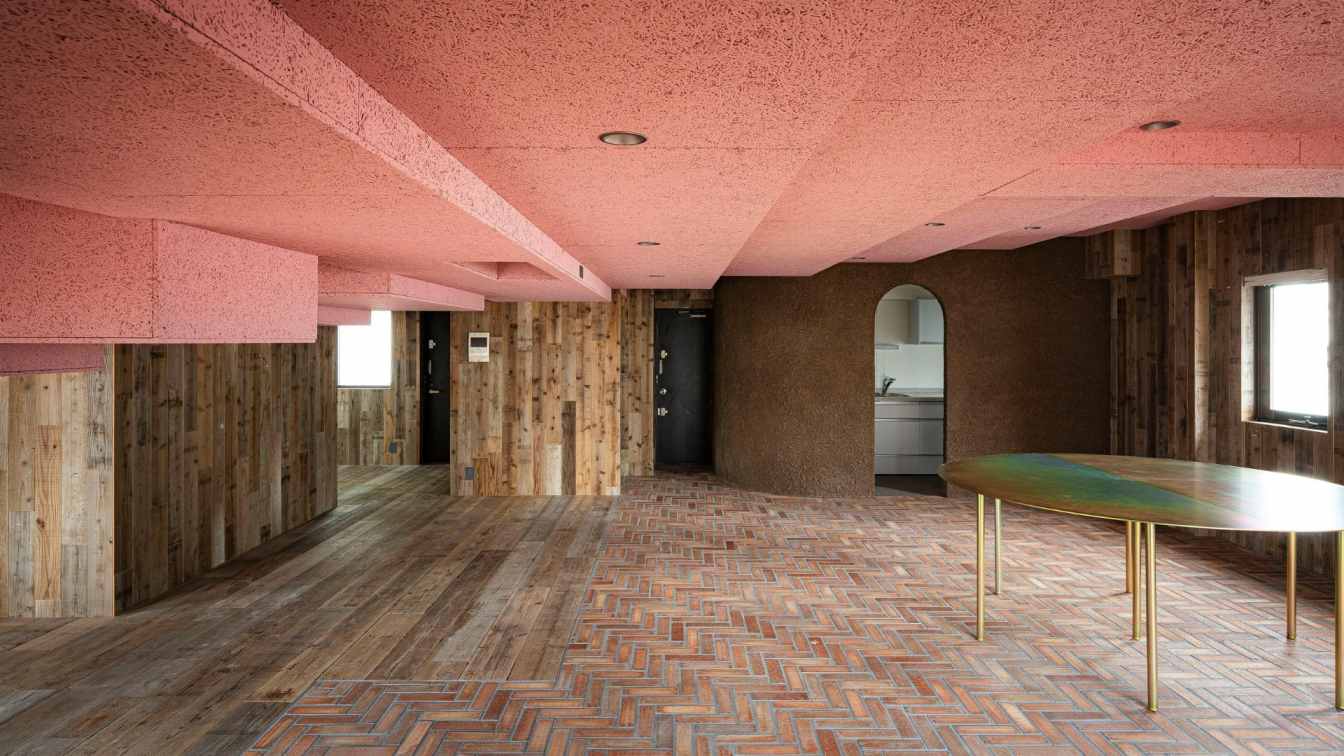The Quito-based architect and designer Aquiles Jarrín has recently completed ''A Forest'' apartment, an intervention in an apartment of the 70s in the historical center of Quito, Ecuador.
Project description by architect:
The intervention was carried out in a modern apartment of the 70s, located right in the Historical Center of Quito. More than two decades ago the Historical Center has been transformed regarding habitation and use of space, being now immersed in a process of residential desertification. As a result, several properties built for housing are now becoming warehouses and commercial shops of all kind. Over the years the commercial vocation of this area has strongly risen to the detriment of a coexistence with housing for Quito’s population.
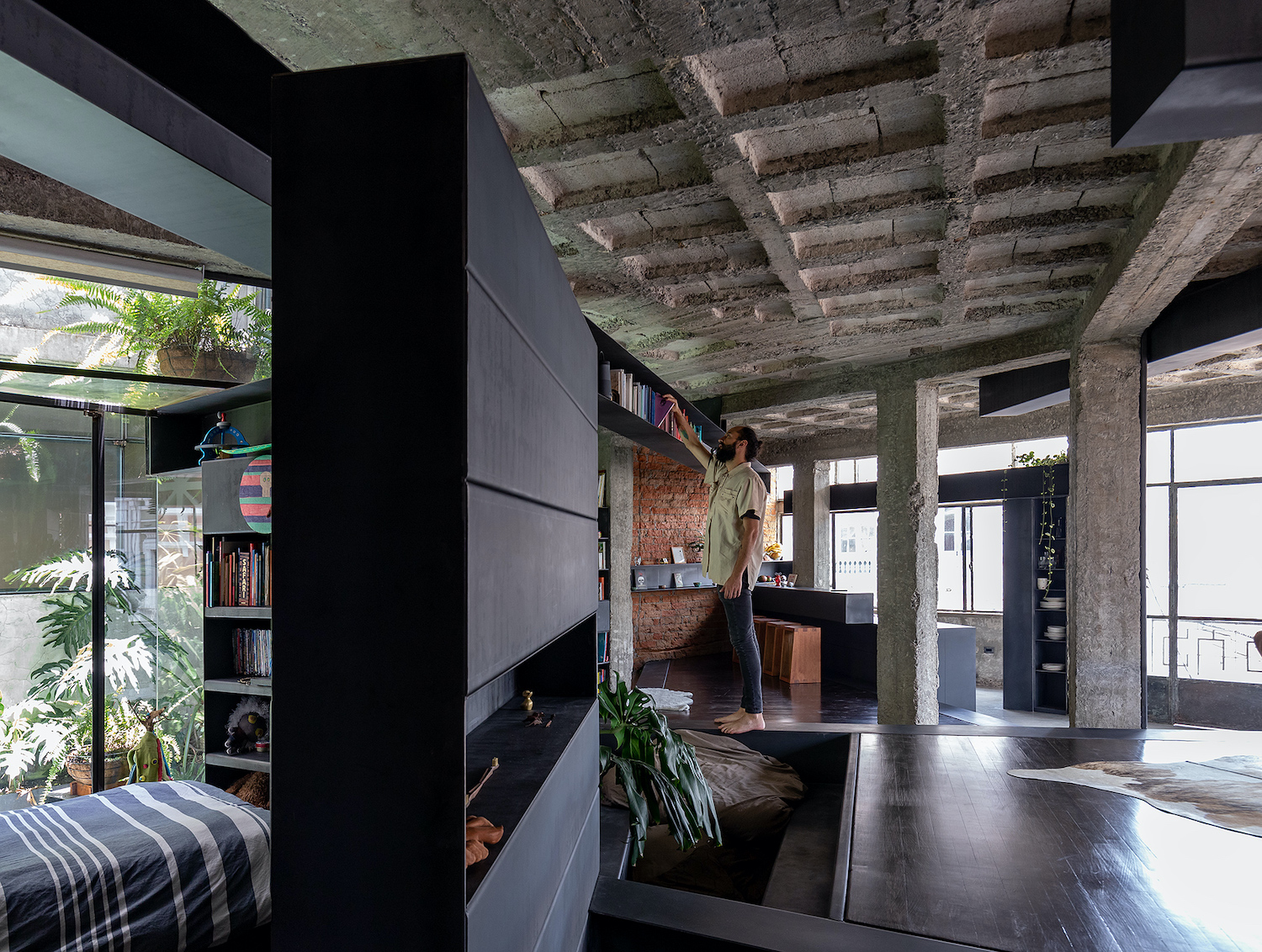 image © JAG studio
image © JAG studio
At the beginning of the intervention, the 112 sqm apartment was in good condition with standard features: porcelain tile flooring, plastered and painted walls and ceilings, white lighting and spatial organization following “regular” housing standards. The apartment consisted in a social area, master bedroom with bathroom, single bedroom, social bathroom, a small storage and a kitchen.
 image © JAG studio
image © JAG studio
The development of the project is based on an investigation carried out with the family that acquires the property (a couple, a 10-year-old son and a small- breed dog). A set of methodologies was applied to understand the needs and ways of inhabiting the space, calling on the imagination, the freedom to occupy the space and the aspirations of achieving a friendly and comfortable habitat for the whole family. Some elements that appeared in the process were related to the importance of generating less defined spaces, with multiple and subjective forms of use. Another conclusion was that the social area of the house should be protagonical and that there were no requirements for strong divisions between the social and the private spaces. The clients were looking for a more dynamic space that would allow for a constant rediscovery and appropriation of the place. The son stated that he times. A strong presence of nature inside the apartment would be another of the important elements to be included.
 image © JAG studio
image © JAG studio
The other source that fueled the conceptualization of the project was the investigation of the space, regarding the affectation of the existing, its potentialities, its limitations and the possibilities of experimentation. Three structuring elements were identified for the development of the project:
• Light: an existing air and light shaft.
• Materiality and composition: existing concrete structure with a free height of 3 m.
• Location: a very seductive urban landscape consisting of a view of the Panecillo hill (iconic place of the city with a protecting statue of the virgin), framed by republican facades.
 image © JAG studio
image © JAG studio
These conditions together with the research results, allowed to define some goals that would be achieved with the intervention. In the first place, building an exterior inside the apartment that allows the element of nature to be introduced with great strength, while generating a great amplitude in the social space, contributing to make this part of the house a green heart, which could be perceived and appreciated from anywhere in the unit. To achieve this target, one of the first decisions was to demolish all the existing walls, generating a new centrality of light.
 image © JAG studio
image © JAG studio
The 12 sqm entrance of air and light was amplified by the absence of walls and allowed to introduce planters, in which climbing and large leaves plants were placed; the walls were replaced by glass openings with access to the patio, reconfiguring the space and transforming something that seemed like a non-place into a green space, releasing nature and light.
 image © JAG studio
image © JAG studio
Without walls, the columns of the concrete structure acquired a strong presence, and promoted working with this element as a basic unit of the project. The challenge consisted in finding out how to enhance this pre-existing element and make it coexist in a new logic of space. The solution came about by introducing a more poetic dimension to the project: we stopped calling the columns as such, to start calling them tree trunks.
 image © JAG studio
image © JAG studio
This gesture of metaphorizing the space was defining for the entire design and understanding of the project, and thus, the idea arose that we were not in a domesticated space, as an apartment with the initially described characteristics, but were entering a wilder world, “a forest”. If the columns were trees and the space a forest, only other trees could appear in this scenario; some fallen or superposed, as it usually happens in nature. The section of the existing concrete columns was 30 x 30 centimeters. With these dimensions new elements were generated to replicate these, and with them a kind of playful and experimental exercise begun.
 image © JAG studio
image © JAG studio
Many ways of crossing the space were tried out. With these new trunk-beams to play with, the design process was consolidated. Several models were made with different possibilities until a series of relationships were found to solve the needs of habitability, proposing a multiplication of spaces in the interior. By overlapping “the trunks” new floor levels were created, having heights of 30 and 60 centimeters. An interior topography occurred that was constantly redrawn.
 image © JAG studio
image © JAG studio
With this more defined pre-planning, the work on the design of this construction unit, which we have been calling tree trunks, began. The aim was to ensure that these elements could provide a solution to all project needs. The models evidenced a clear potential that would allow to (re) define the space, multiplying it. Thus, an enhancement for everyday use was necessary. The solution was to design these elements with three faces and an interior void, giving it a characteristic of furniture. “In” a forest “we would not find chairs or shelves, so this element became a multifunctional piece, where a book, bread or shoes could be located.”
 image © JAG studio
image © JAG studio
To build these trunks, 4 and 6mm thick metal plates were used. Metal was the most suitable material for this project because its characteristics allowed a more versatile use; the pieces could be structural and part of the furniture at the same time. Also, the apartment became a workshop, where all the elements of the project were manufactured. Metal is the main material of the project, its natural finish was preserved as soon as a protective layer was applied.
 image © JAG studio
image © JAG studio
With these definitions, it was possible to develop practically all the elements of the project; intimate spaces, such as bedrooms and bathrooms, arise from the superposition of these elements that assemble closets, and that function at the same time as space differentiators. There are no doors, but curtains with magnets that visually close the spaces, inviting new logics of respect and intimacy among the inhabitants of the forest.
 image © JAG studio
image © JAG studio
Another intervention strategy was to clean the place of any element that seeks to hide the nature of the materials: plastering of the ceiling, columns and walls were removed, the brick appeared and the paint was scraped off some walls, generating new and unique textures. Chonta wood was used for the new floor levels, which as a dark wood - almost black in color - was in tune with the tones of metal and concrete.
 image © JAG studio
image © JAG studio
The brutality of the materials presents the intervention in an unfinished state of work or of modern ruin, in tension with purity of the lines and the finish of the metal elements crossing the space, and in conjunction with the plants. This composition gave so much strength to the interior of the project, that the beautiful colonial urban landscape that embraces the facade from the large windows, became something secondary to discover, and a new moment in the experience of touring the apartment.
 image © JAG studio
image © JAG studio
The project “A forest” is a world in constant discovery. The textures, levels and elements that float and traverse invite to reinvent the forms of use and appropriation in space. Plants are not decorative, they are inhabitants of this shared and timeless place that offers a sensory and imaginative experience of living everyday-life.
 image © JAG studio
image © JAG studio
 image © JAG studio
image © JAG studio



Project name: A Forest
Architecture firm: Aquiles Jarrín
Design: Aquiles Jarrín
Location: Oriente Oe318 and Guayaquil. Quito’s Historic Center. Ecuador
Area:120 m²
Design year: 2019
Completion year: 2020
Construction: Aquiles Jarrín
Suppliers: Acero Center - Fairis
Photography: JAG studio
Text: Aquiles Jarrín

